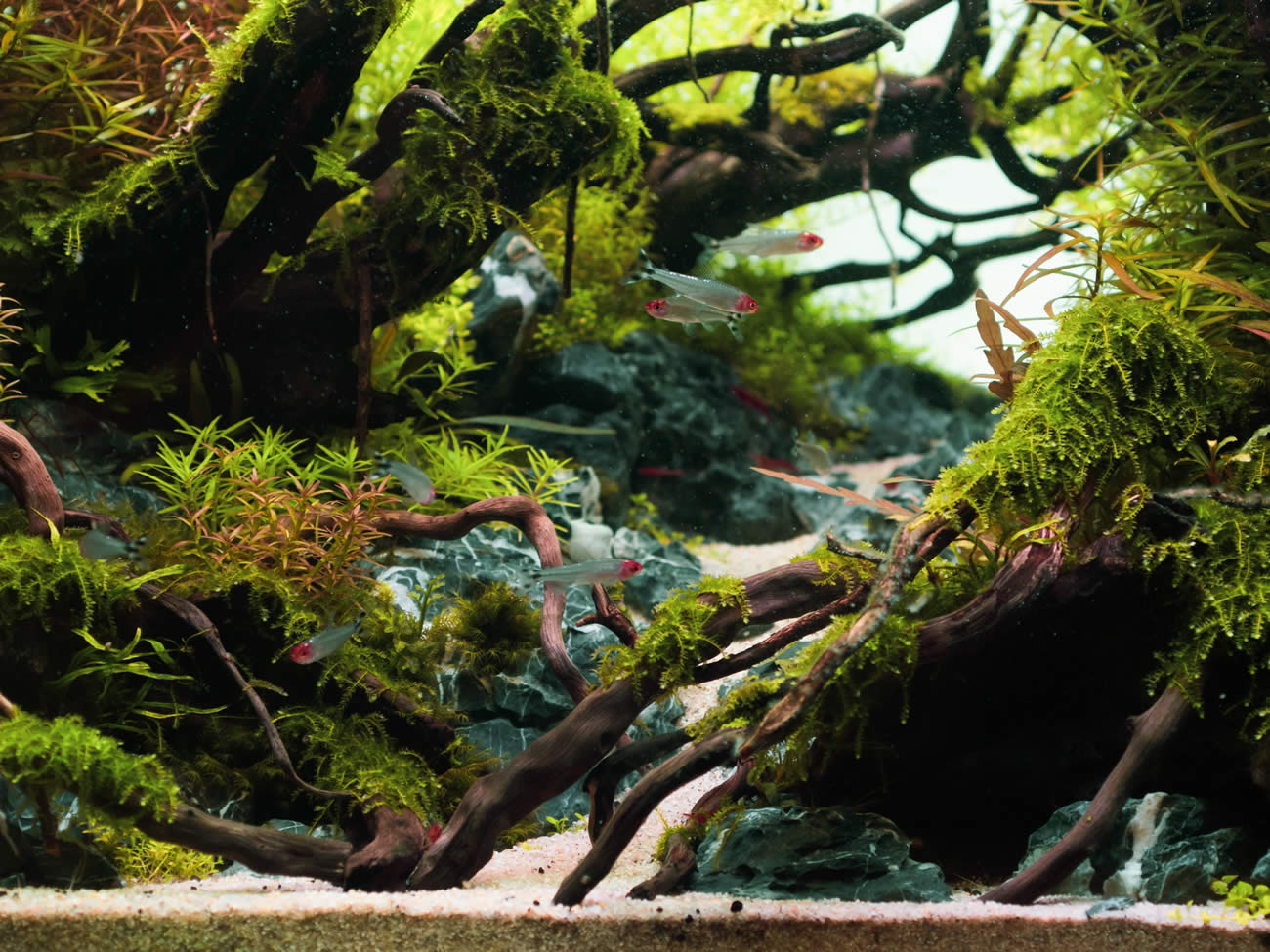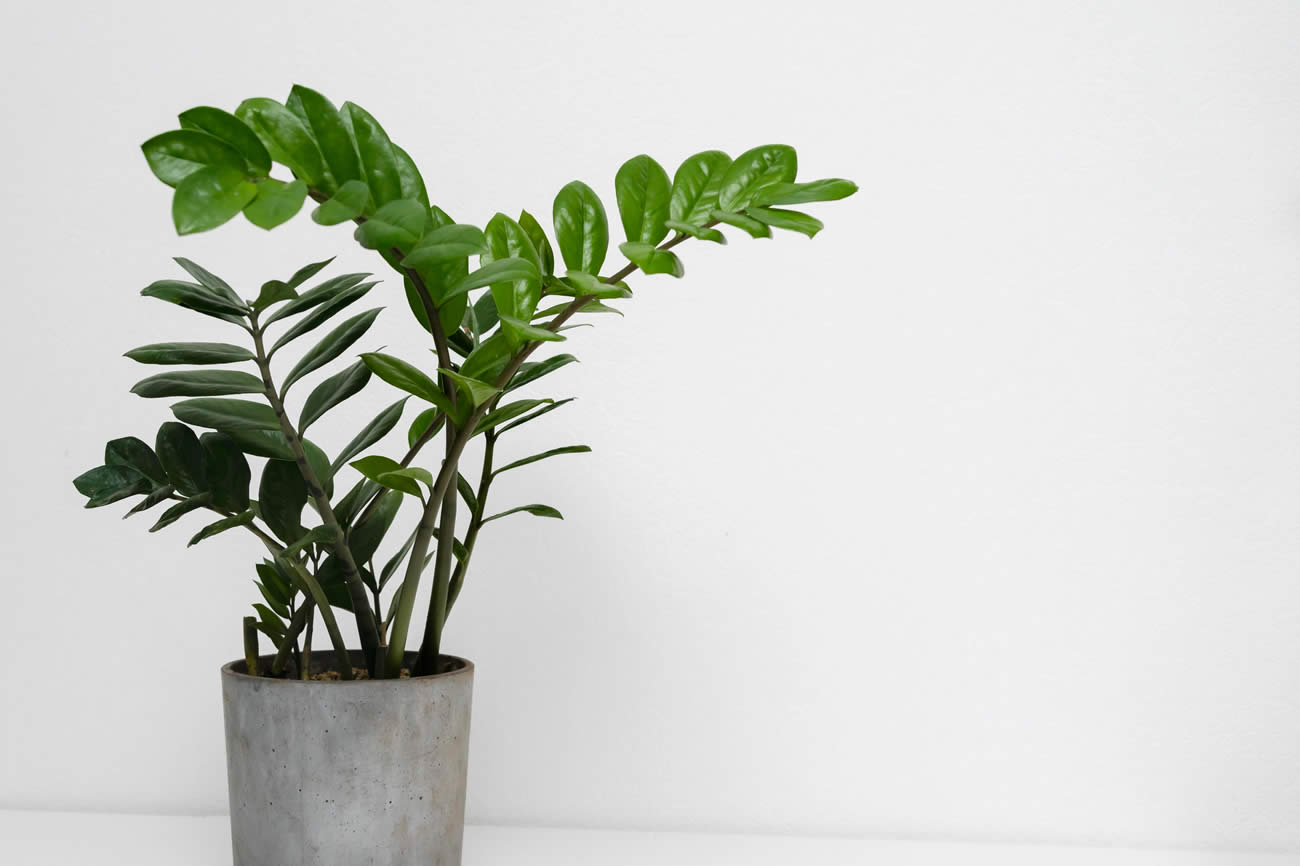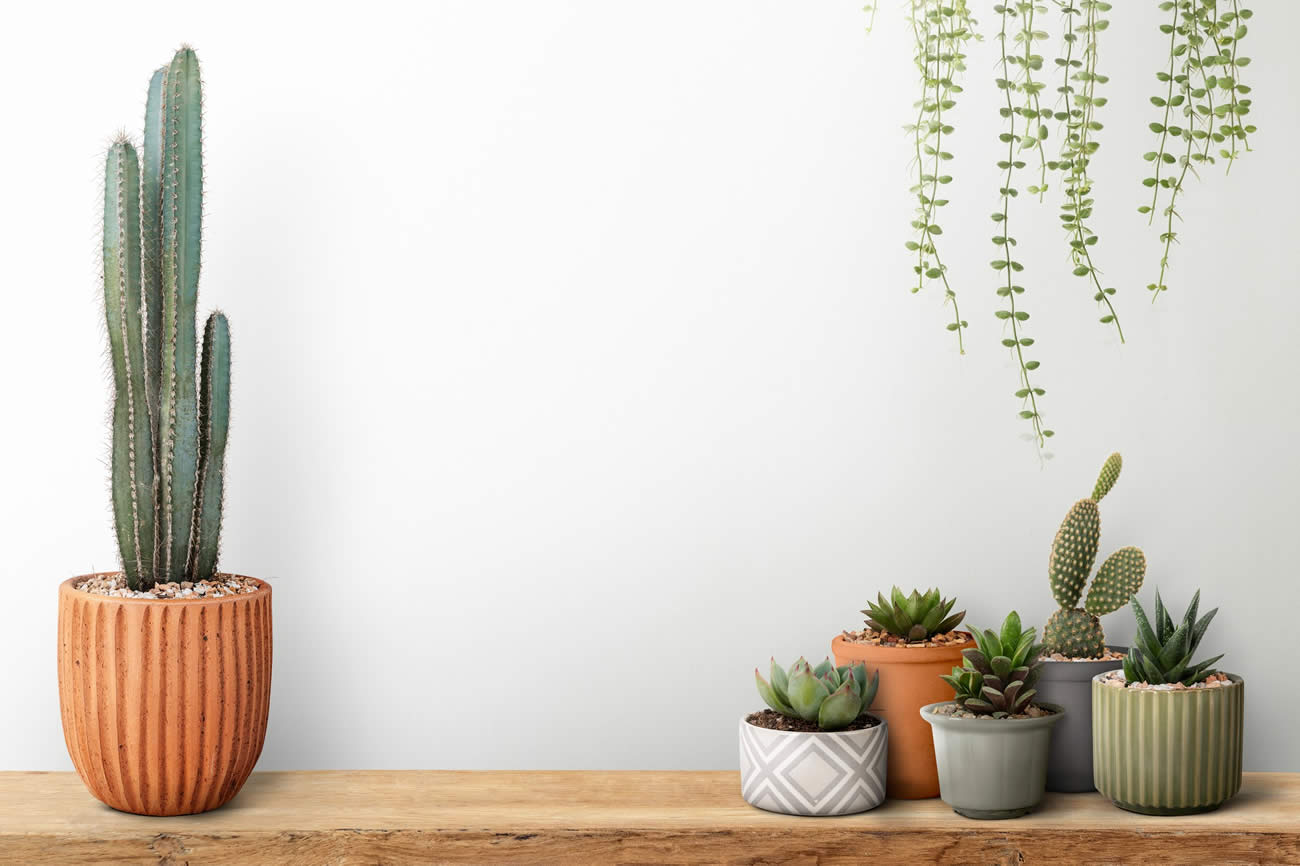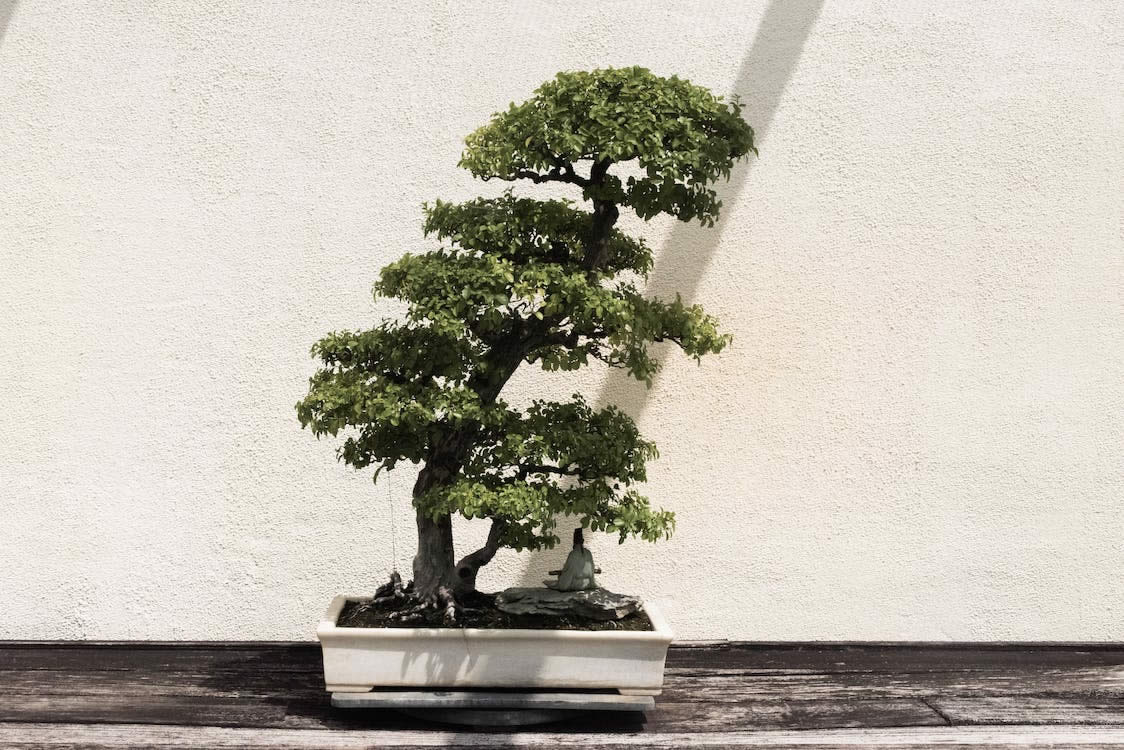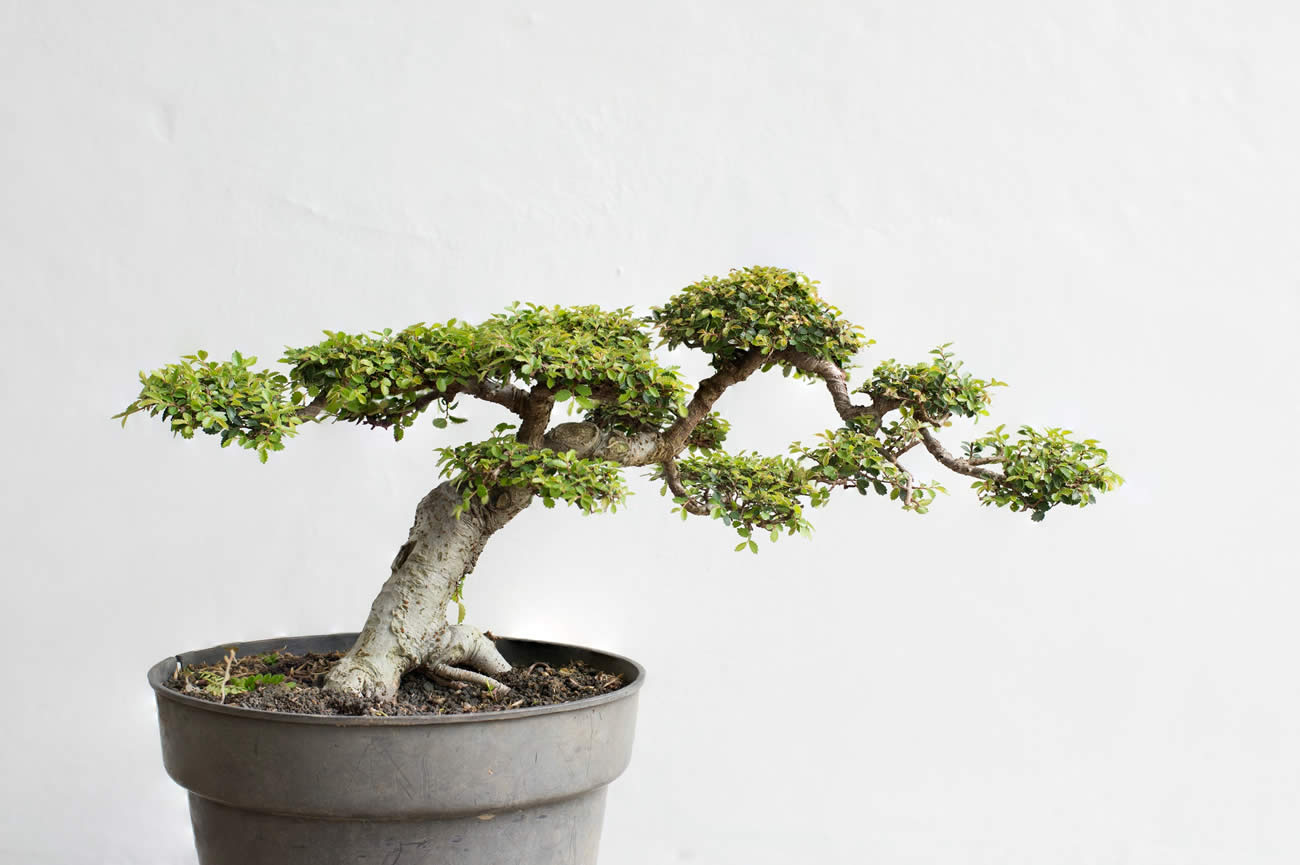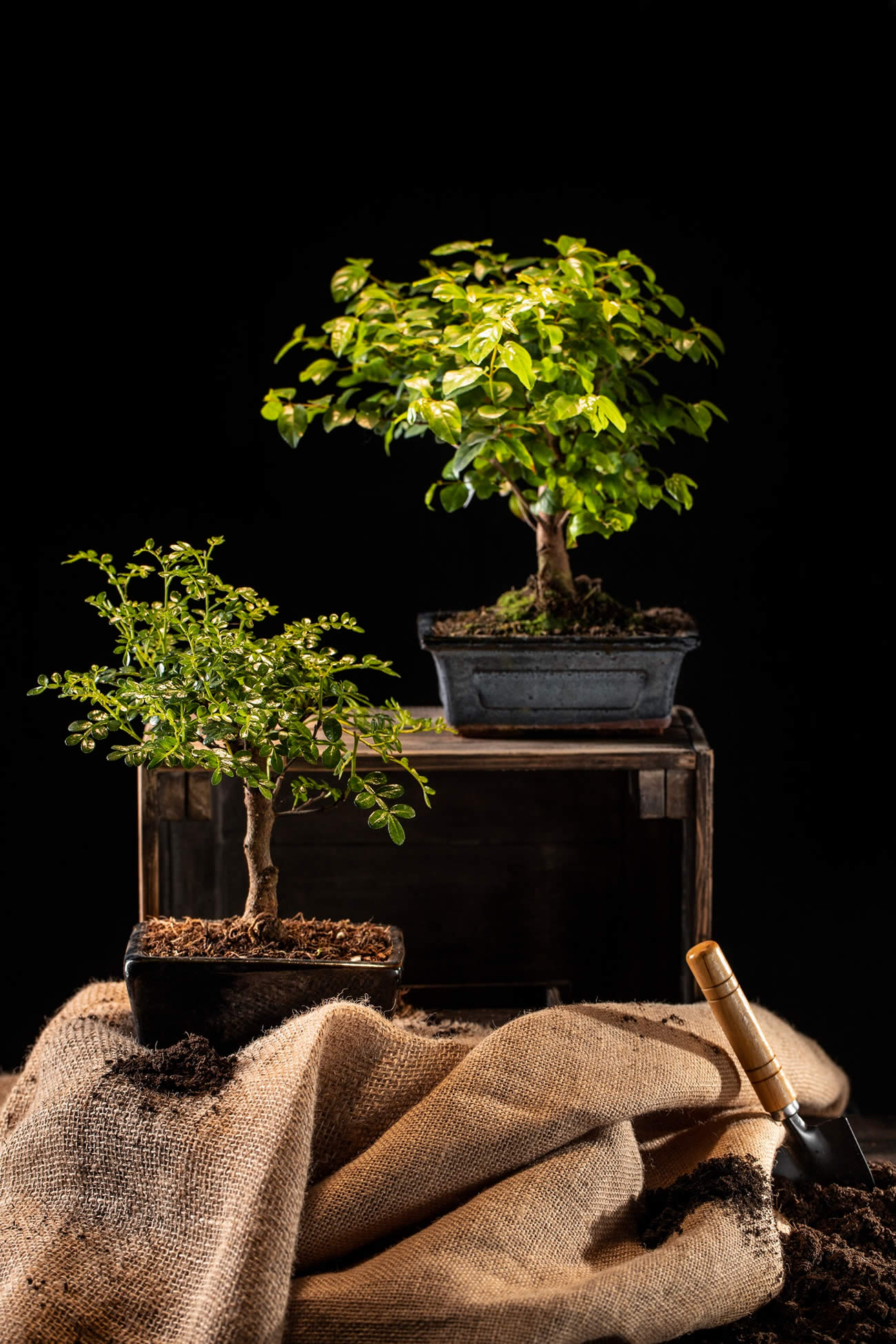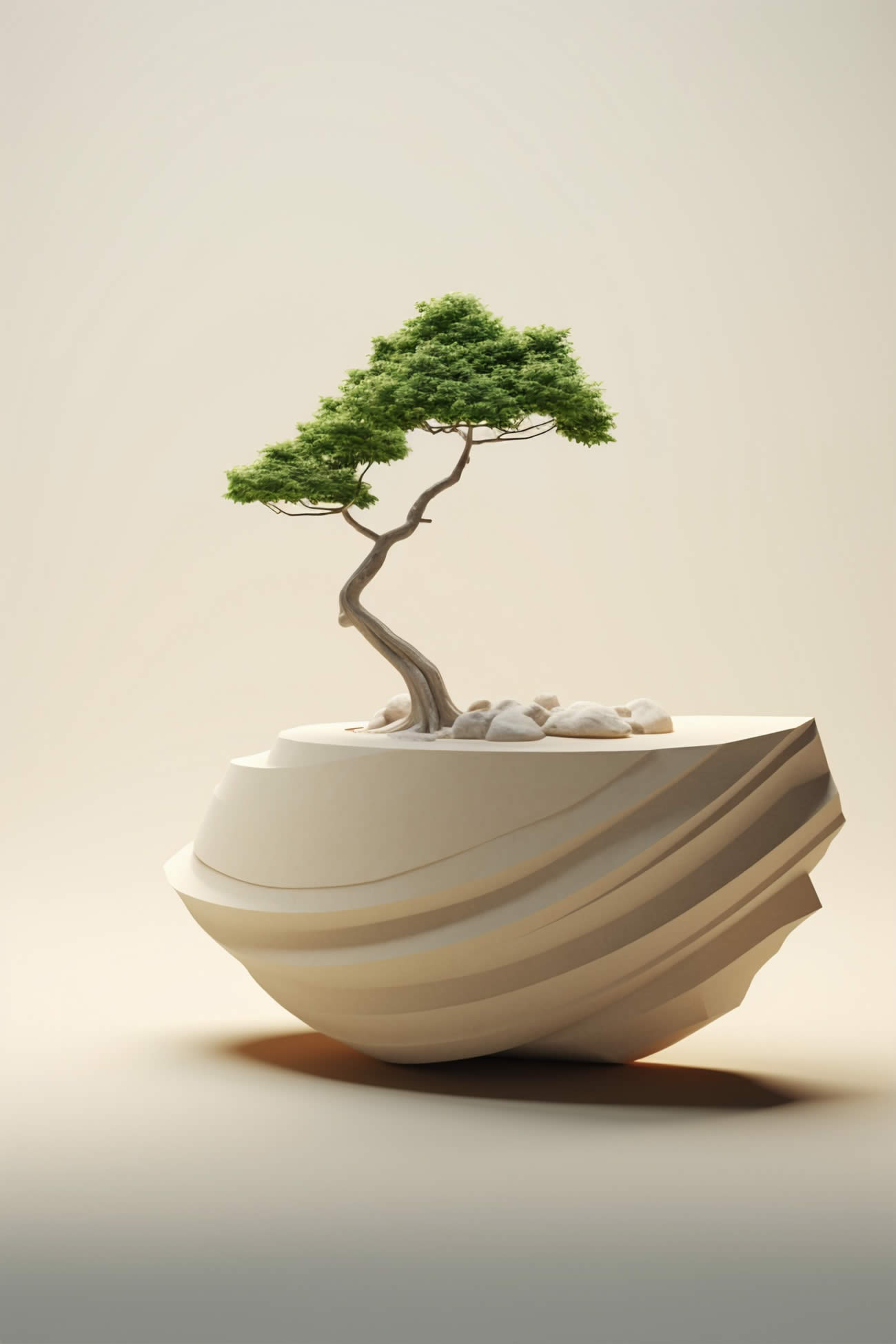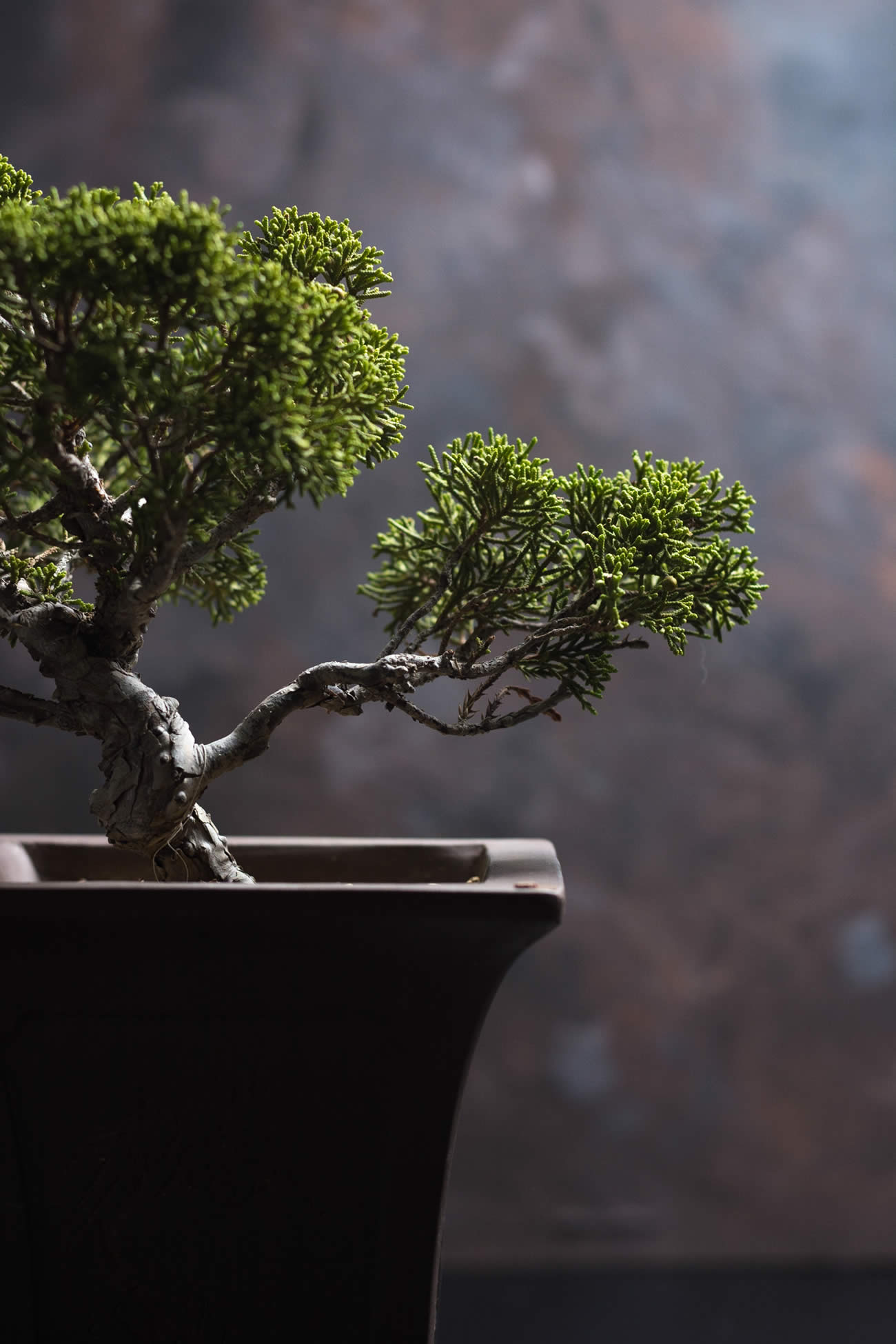Bonsai trees, these exquisite cultivated dwarf trees, have been meticulously trained over centuries to grow in specific shapes, embodying the art of bonsai cultivation. This ancient practice, with its roots dating back to the Ming dynasty (1368-1644) in China, gradually found its way to Japan, where it flourished into an exceptionally refined and cherished art form. The intricate techniques and delicate care given to these miniature trees reflect the profound appreciation for nature’s beauty and the harmonious balance between humans and the natural world.
Each bonsai tree you look after is a living masterpiece, meticulously pruned and shaped to mirror the grandeur of full-sized trees, capturing the essence of nature in miniature form. The art of bonsai involves a deep understanding of horticulture, patience, and an artist’s eye for detail. From the careful selection of the tree species to the precise wiring and trimming of branches, every step in the bonsai creation process is a testament to the dedication and skill of the bonsai artist.
Bonsai trees are not merely decorative plants; they are living sculptures that tell stories. Ancient forests inspire some bonsai trees, while others depict majestic landscapes or symbolize spiritual concepts. Each tree carries a unique character, shaped by the hands of the artist and influenced by the natural forces of growth. As the years pass, a bonsai tree evolves, its trunk thickening and its branches reaching further towards the sky, capturing the essence of time and the beauty of impermanence.
Bonsai cultivation is a lifelong journey, requiring the caretaker’s constant attention and nurturing. It is a practice that fosters a deep connection with nature and cultivates patience, discipline, and humility. Through the art of bonsai, we are reminded of the intricate interconnectedness of all living things and the delicate balance we must maintain to coexist harmoniously with our natural surroundings.
In today’s fast-paced world, the art of bonsai serves as a gentle reminder to slow down, appreciate the beauty around us, and find tranquility in the simplicity of nature. Whether it is displayed in a serene garden or gracing the corner of a living room, a bonsai tree brings a sense of calm and contemplation to any space it inhabits.
So, next time you encounter a bonsai tree, take a moment to admire its timeless beauty and reflect on the centuries of artistry and devotion that have shaped it. Let it inspire you to seek harmony and balance in your own life, and to cherish the delicate wonders of nature that surround us all.
[cp_popup display=”inline” style_id=”32773″ step_id = “1”][/cp_popup]
The word “bonsai” originates from the Japanese term “bon-sai,” which translates to “tray planting” or “planting in a pot.” This art form involves the meticulous cultivation and care of miniature trees, achieved through selective pruning and root reduction techniques.
Bonsai trees are typically cultivated from seedlings or cuttings rather than seeds, as they tend to exhibit slower growth than their seed-grown counterparts. However, if you’re eager to have a bonsai tree without the wait, you can also purchase them from nurseries.
These captivating miniature trees offer an excellent way to infuse a touch of nature into your living space. Not only are they aesthetically pleasing, but they also require relatively simple maintenance and can thrive for many years. But the question arises: how long does it take for a bonsai tree to reach its full potential?
How Long Does A Bonsai Tree Take To Grow?
The answer varies depending on the tree species you choose and the level of care you provide. For instance, the juniper bonsai, one of the most common species, typically takes around ten years to mature. Other popular varieties include elm, pine, maple, and spruce trees, each with its unique growth timeline.
To determine the growth expectations for your bonsai tree, consult the instructions provided with your specific plant or seek guidance from knowledgeable experts at your local nursery or garden centre. They can offer insights into the optimal conditions for your bonsai’s health and growth, including watering and fertilization schedules. Moreover, they can provide valuable advice on identifying and managing potential threats to your bonsai’s well-being, such as spider mites or other pests that may harm the leaves or bark over time.
The allure of bonsai trees extends beyond their age. Many of these exquisite plants have been painstakingly cultivated for centuries, resulting in their awe-inspiring forms. They have been skillfully shaped and sculpted by dedicated enthusiasts, and now the responsibility falls to you to continue this legacy of artistry and care.
Is Planting a Bonsai Hard?
To properly plant your beloved bonsai tree in its designated pot, you should begin by carefully removing the wire that was previously used to secure its delicate branches. This can be easily accomplished by employing a pair of pliers or wire cutters, ensuring that the wire is completely detached without causing any damage.
Once the wire has been successfully removed, take gentle care in gently separating the roots from one another, allowing them to fully flourish as you proceed to plant them into the enriched soil. By following these meticulous steps, you will set the stage for your bonsai tree to thrive and bring joy to your surroundings for years to come.
After planting or trimming your bonsai tree into its pot, it’s important to water it thoroughly so that all of its roots are covered in water. Be sure not to overwater as this can cause root rot. It’s also important to keep an eye on your bonsai’s soil moisture levels so that they don’t dry out too much or become too wet.
But if you want to plant or revive bonsai trees, then you should have the necessary skills and knowledge on how to do so.
The first thing that you need to do is adequately prepare yourself physically and mentally for the rewarding journey of planting a bonsai tree. Ensuring good health is crucial, as this delicate process requires physical work and strength. By being in optimal physical condition, you’ll be better equipped to handle the demands of planting and caring for your bonsai.
Furthermore, mental preparedness is equally important. While planting a bonsai tree, it’s important to acknowledge that challenges may arise along the way. There might be instances where things don’t go as planned, but fear not! With a quick-thinking mindset, you’ll be able to adapt and improvise, preventing any situation from spiraling out of control.
It’s worth mentioning that the world of bonsai offers a wide array of choices. From dwarf trees to large ones and miniature trees to many other varieties, there’s a bonsai for every preference and purpose. Consider the specific traits and characteristics of each type, and select the one that best aligns with your vision and the location where you intend to display these magnificent plants.
How Can I Speed Up My Bonsai Tree Growth?
There are several factors that can have an impact on the growth rate of bonsai trees. One of these factors is the specific species of plant that you choose to cultivate. It’s worth noting that certain types of plants tend to grow at a faster pace compared to others. For instance, deciduous trees typically exhibit a swifter growth rate than coniferous trees. This can be attributed to the fact that deciduous trees shed their leaves during the winter season, which consequently reduces their available resources for growth during this time.
Another crucial factor that affects the growth rate of bonsai trees is the amount of sunlight they receive. It’s widely recognized that increased exposure to sunlight tends to accelerate the growth of plants, including bonsai trees. On the other hand, reduced exposure to sunlight may result in slower growth.
If you are looking to boost the growth rate of your bonsai tree and how long they live, one effective approach is to regularly fertilize it with liquid fertilizer. Ideally, this should be done every one or two weeks throughout the spring to fall seasons, taking into consideration the climatic conditions of your specific region. Additionally, it is important to maintain a proper watering routine for your bonsai tree. While it is crucial to keep the roots of the tree sufficiently moist at all times, it is equally important to avoid over-watering, as this can negatively impact the growth and overall health of the tree.
There are a few things you can do to speed up the growth of your bonsai tree:
- Choose a fast-growing species. Some bonsai species grow faster than others. If you are looking to speed up the growth of your bonsai tree, choose a fast-growing species such as Chinese juniper, Japanese black pine, or boxwood.
- Provide plenty of sunlight. Bonsai trees need sunlight to grow. Place your bonsai tree in a spot where it will receive at least 6 hours of sunlight daily.
- Fertilise regularly. Bonsai trees need fertilizer to grow. Fertilize your bonsai tree every two weeks during the growing season with a balanced fertilizer.
- Water regularly. Bonsai trees need water to grow. Ensure you water your bonsai tree regularly, but do not overwater it. The best way to tell if your bonsai tree needs water is to check the soil. If the top inch of soil is dry, it is time to water.
- Prune regularly. Pruning encourages new growth. Prune your bonsai tree regularly during the growing season. Be careful not to remove too many leaves or branches at once.
- Repot regularly. Bonsai trees must be repotted every two to three years or when they become rootbound. Repotting should be done during the growing season. When repotting, use a bonsai pot slightly larger than the current pot. Use a bonsai potting mix that is specifically designed for bonsai trees.
In addition to these tips, you can also try the following to speed up the growth of your bonsai tree:
- Use a growth stimulant. There are a number of growth stimulants available on the market that can be used to speed up the growth of bonsai trees. Be sure to follow the directions on the product label carefully.
- Increase the temperature. Bonsai trees grow faster in warmer temperatures. If you live in a cold climate, you can try increasing the temperature around your bonsai tree by placing it in a greenhouse or sunny windowsill.
- Reduce stress. A number of factors, such as overwatering, underwatering, and pests and diseases, can stress bonsai trees. Try to reduce stress on your bonsai tree by giving it the proper care and attention.
When it comes to accelerating the growth of your bonsai tree, it’s crucial to keep in mind that there can be trade-offs. Bonsai trees that are subjected to rapid growth often exhibit weaker trunks and branches, making them more vulnerable to pests and diseases.
As a beginner in the art of bonsai, it’s wise to exercise caution and allow your bonsai tree to grow naturally. This approach not only grants you the opportunity to grasp the fundamentals of proper bonsai care, such as pruning and wiring, but also guarantees the development of a robust and exquisitely beautiful tree in the long run.
By allowing your bonsai tree to grow at its own pace, you give it the chance to establish a strong root system, which is essential for its overall health and vitality. This foundation will provide the necessary support for the tree as it matures and undergoes shaping techniques.
So take your time, nurture your bonsai, and witness its journey towards becoming a magnificent masterpiece. With patience and care, your bonsai tree will transform into a living work of art, bringing you joy and a sense of accomplishment for years to come.
Artificial Bonsai Trees
Artificial bonsai trees are an excellent alternative for individuals who desire to appreciate the stunning aesthetics of a real bonsai tree but are constrained by time and space to provide proper care. With their meticulously crafted and lifelike features, these artificial trees offer a hassle-free way to bring the essence of nature into any indoor setting. Whether adorning a cosy apartment or enhancing the ambience of an office, artificial bonsai trees provide a touch of tranquillity and beauty that can be enjoyed effortlessly.
Artificial bonsai trees are made from various materials, including plastic, wood and aluminium. Most artificial bonsai trees resemble the shape and size of a real tree. Some come with realistic leaves and branches that move in the wind. You can also find artificial bonsai trees with silk or plastic trunks with leaves and branches attached.
Artificial Bonsai Trees for Beginners
If you’re interested in learning about the intricate art of bonsai but don’t know where to begin, why not start with an artificial bonsai tree? By opting for a fake tree, you can freely experiment with various styles and techniques without the concern of accidentally damaging or killing a living plant. With an artificial bonsai, you can practice your bonsai skills, perfect your watering technique, and explore different arrangements, all while embracing the beauty and tranquillity that bonsai cultivation brings. So, leap and embark on your bonsai journey with an artificial tree that allows you to learn, grow, and create stunning miniature landscapes with ease.
Artificial Bonsai Trees for Displaying Artwork
Artificial bonsai trees make exquisite display pieces that effortlessly enhance the ambience of any setting. With their meticulously crafted design, these miniature masterpieces can be showcased as captivating centrepieces at social gatherings, delicately adorning tables at upscale restaurants or hotels, and imparting a touch of elegance to the lobbies of office buildings. These incredibly lifelike plants not only introduce a burst of colour and texture but also infuse every room they grace with an undeniable sense of beauty and tranquillity.

